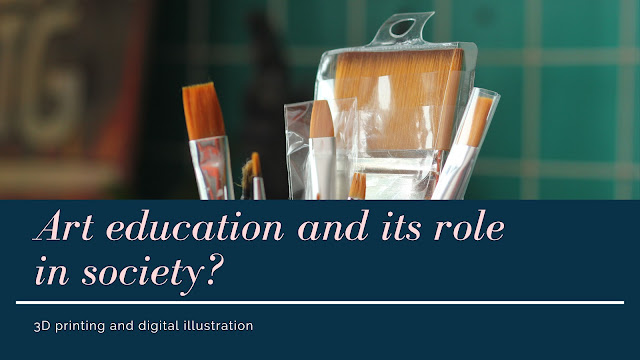
The future of art education and its role in society?
Introduction
Art education has long played a vital role in shaping society's cultural and creative landscape. From the traditional methods of teaching art in the classroom to the more contemporary approaches of community-based and digital learning, the future of art education looks to be one of adaptability and innovation.
One trend that is becoming increasingly popular in art education is the incorporation of technology. From virtual reality and augmented reality to 3D printing and digital illustration, technology is allowing students to explore new mediums and techniques that were once impossible to teach in a traditional classroom setting. Additionally, online and distance learning programs are becoming more prevalent, making art education more accessible to those who may not have the opportunity to attend a brick-and-mortar school.
Another trend in art education is the emphasis on community-based learning. This approach focuses on connecting students with local artists and community organizations, providing them with real-world experience and a deeper understanding of the role art plays in society. This can include working on public art projects, participating in artist-led workshops, and even internships with local museums and galleries.
Art education is also becoming more inclusive, with a growing emphasis on diverse perspectives and representation. This includes the inclusion of underrepresented communities, such as people of color, the LGBTQ+ community, and people with disabilities, as well as the incorporation of diverse cultural art forms.
The future of art education is also tied to the ever-evolving role of art in society. As technology continues to shape our world, the demand for creative problem-solving and critical-thinking skills will only increase. Art education provides students with the tools to think outside the box, fostering innovation and creativity, which are essential skills for success in any field.
In summary, the future of art education looks to be one of adaptability and innovation, with a focus on technology, community-based learning, inclusivity, and the ever-evolving role of art in society. As the world changes, art education will continue to play a vital role in shaping the cultural and creative landscape and providing students with the skills they need to succeed in an ever-changing world.
What is the benefit of arts in the future?
The benefits of arts in the future are numerous and far-reaching. Firstly, the arts play a crucial role in fostering creativity and critical thinking skills. Through the practice of creating art, individuals learn to think outside the box, problem-solve, and see things from different perspectives. These skills are not only valuable in the art world, but in all areas of life, including business, science, and technology.
Secondly, the arts have the power to bring people together and promote cultural understanding. In a world that is becoming increasingly globalized, it is important for individuals to have the opportunity to learn about and appreciate different cultures. The arts provide a unique platform for this kind of learning, as they can communicate ideas and emotions in a way that is both universal and personal.
Thirdly, the arts have been shown to have a positive impact on mental and physical health. Studies have shown that engaging in artistic activities, such as painting or music, can reduce stress, improve mood, and even boost the immune system. The arts can also be used as a form of therapy for individuals dealing with mental health issues.
Fourthly, the Arts are an important part of personal development, they help people develop their creativity, self-expression, and emotional intelligence. It helps to establish a sense of identity, self-esteem, and self-worth.
Lastly, the Arts also play a significant role in the economy. A strong arts sector can be a major contributor to a city or region's economy, creating jobs and bringing in tourism. Arts-related industries, such as film and theater, are also major employers and can provide opportunities for individuals in a variety of fields, including production, design, and marketing.
In conclusion, the arts have a valuable role to play in the
future. They foster creativity, promote cultural understanding, and have a
positive impact on mental and physical health. They also play a significant
role in economic development. Investing in the arts should be a priority for
society in order to ensure a brighter future for all.





